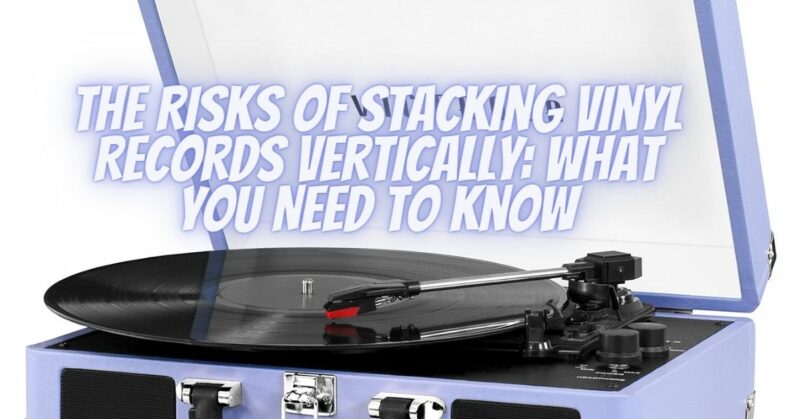Vinyl records, cherished for their analog warmth and nostalgic appeal, are known for their fragility and sensitivity to mishandling. When it comes to storing your vinyl collection, one common mistake that can lead to potential harm is stacking records vertically. In this article, we’ll explore the dangers and risks associated with stacking vinyl records in a vertical position and offer alternative storage solutions to ensure the preservation of your cherished music collection.
The Dangers of Vertical Stacking
- Warped Records: Stacking vinyl records vertically, especially in large quantities, can result in the deformation or warping of records over time. The weight of the records above exerts pressure on the ones below, causing them to warp. Warping can lead to tracking issues, distortion, and even permanent damage to the grooves.
- Ring Wear: When records are stacked vertically without protective measures, the edges of the records can rub against each other, causing ring wear. Ring wear manifests as circular marks or scuffs on the record’s cover and can significantly diminish its aesthetic value.
- Cover Damage: Besides the risk of ring wear, the covers of vinyl records can become creased, bent, or torn when stacked vertically. These damages affect the overall presentation of the record and may decrease its collectible value.
- Difficulty in Accessing Records: Stacking records vertically makes it challenging to access and retrieve specific albums. Constantly shuffling through a stack can lead to unintentional mishandling and increased wear and tear.
- Pressure on Sleeves: The sleeves that protect vinyl records are essential for preventing dust, debris, and scratches. When records are stacked vertically, the weight of the records above can compress the sleeves, potentially leading to wrinkling, tearing, or damaging the inner sleeve.
- Increased Risk of Cracking: Fragile records, particularly those that are thinner or older, are more susceptible to cracking when subjected to the pressure of vertical stacking.
Proper Vinyl Storage Solutions
To protect your vinyl collection from the dangers associated with vertical stacking, consider these alternative storage solutions:
- Shelving Units: Invest in purpose-built record shelving units that allow records to be stored horizontally, with support along their entire length. This minimizes the risk of warping, ring wear, and cover damage.
- Inner Sleeves: Use high-quality polyethylene or anti-static inner sleeves to protect the vinyl from dust and static, reducing the risk of scratches.
- Outer Sleeves: Place your records in protective outer sleeves to safeguard the covers from wear and tear.
- Proper Spacing: Ensure that records are not overly crowded on the shelves, leaving enough space between them to prevent pressure and damage.
- Temperature and Humidity Control: Store your vinyl collection in a cool, dry environment to prevent moisture damage and mold growth.
Conclusion
While vinyl records are prized for their audio quality and aesthetic appeal, they require proper care and storage to maintain their condition and value. Vertical stacking is a common practice that should be avoided to prevent the potential dangers it poses to your vinyl records. By investing in purpose-built shelving units and employing protective measures such as inner and outer sleeves, you can enjoy your vinyl collection for years to come while preserving its quality and collectible value.


